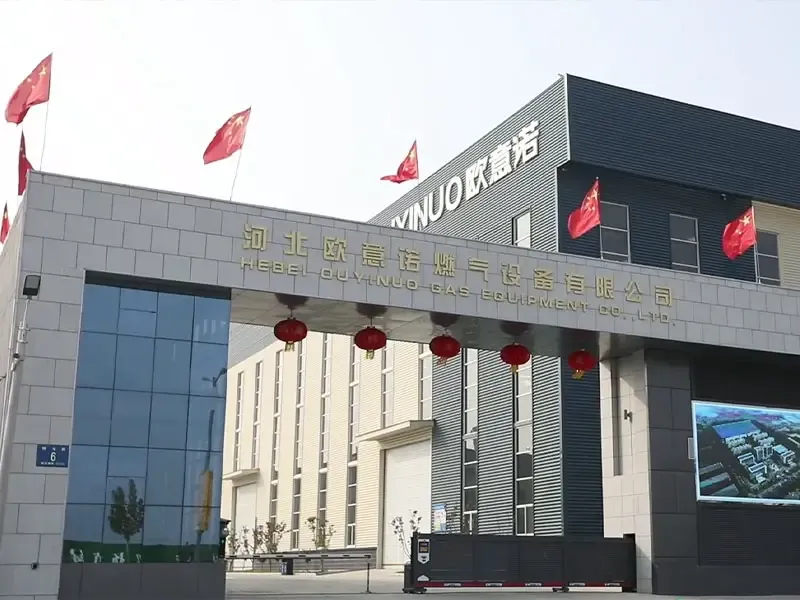
Nov . 08, 2024 07:25
Back to list
Understanding Gas Safety Relief Valves and Their Importance in Pressure Regulation
Understanding Gas Safety Relief Valves Ensuring Safety and Efficiency
Gas safety relief valves play a crucial role in maintaining the integrity and safety of various gas systems, including those used in industrial, commercial, and residential applications. These valves are designed to protect equipment and personnel from the hazards associated with excessive pressure, ensuring that operations run smoothly and safely.
What is a Gas Safety Relief Valve?
A gas safety relief valve is a mechanical device that automatically releases gas when the pressure within a system exceeds a predetermined threshold. Its primary purpose is to prevent pressure build-up that could lead to catastrophic failures, such as explosions or equipment ruptures. By directing excess gas safely away from the critical components of the system, these valves help maintain optimal operating conditions while safeguarding against potential risks.
How Do Gas Safety Relief Valves Work?
The operation of a gas safety relief valve is relatively straightforward. The valve consists of a body, a seat, and a disc or diaphragm that seals the valve. Under normal operating conditions, the valve remains closed, effectively containing the gas within the system. However, when the internal pressure exceeds the setpoint, the force on the diaphragm or disc overcomes the spring tension, causing the valve to open. This action allows gas to escape, thus reducing the pressure to a safe level. Once the pressure drops back to acceptable limits, the valve closes again, returning to its default state.
Types of Gas Safety Relief Valves
There are several types of gas safety relief valves, each suited for different applications
1. Spring-Loaded Relief Valves The most common type, these valves use a spring mechanism to maintain the seal until the pressure exceeds the set point.
gas safety relief valve

2. Pilot-Operated Relief Valves These valves use a small pilot valve to control the opening and closing of a larger main valve, providing greater accuracy and higher flow rates.
3. Differential Relief Valves Designed to vent gas from a system based on a pressure differential, they are often used in processes requiring precise pressure control.
Choosing the right type of relief valve is vital to ensuring the safety and efficiency of the gas system.
Applications and Importance
Gas safety relief valves are found in various applications, including natural gas distribution networks, industrial processes, refrigeration systems, and HVAC units. Their importance cannot be overstated; they not only protect infrastructure but also ensure compliance with safety regulations. In many regions, regulatory agencies require the installation of relief valves to minimize the risk of accidents and enhance public safety.
Maintenance and Compliance
Regular maintenance of gas safety relief valves is essential to ensure their reliable operation. Operators should conduct routine inspections, checking for signs of corrosion, leaks, or malfunction. Testing the valve’s set pressure and flow rate can help identify potential issues before they escalate. Compliance with relevant codes and standards, such as the American Society of Mechanical Engineers (ASME) guidelines, is also critical to maintaining system safety.
Conclusion
In summary, gas safety relief valves are a vital component of any gas system, providing essential protection against overpressure scenarios that could lead to serious hazards. Understanding how these valves operate, the different types available, and their applications can help ensure that they function effectively. By prioritizing the installation, maintenance, and compliance of gas safety relief valves, companies and homeowners alike can create a safer environment and contribute to the overall integrity of gas systems. Investing in safety measures today is a commitment to a secure and reliable future for all.
Latest news
-
Safety Valve Spring-Loaded Design Overpressure ProtectionNewsJul.25,2025
-
Precision Voltage Regulator AC5 Accuracy Grade PerformanceNewsJul.25,2025
-
Natural Gas Pressure Regulating Skid Industrial Pipeline ApplicationsNewsJul.25,2025
-
Natural Gas Filter Stainless Steel Mesh Element DesignNewsJul.25,2025
-
Gas Pressure Regulator Valve Direct-Acting Spring-Loaded DesignNewsJul.25,2025
-
Decompression Equipment Multi-Stage Heat Exchange System DesignNewsJul.25,2025

